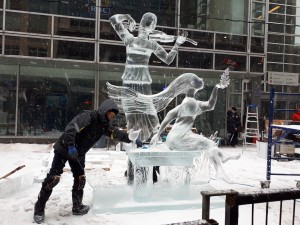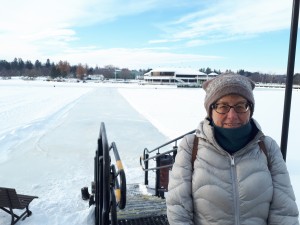This month BWL published a new edition of my first novel, Deadly Fall. BWL chose to title the book, A Deadly Fall, in part to distinguish the new release from the original. I have long wanted to update Deadly Fall, to bring the time frame in line with the sequel, Ten Days in Summer. Deadly Fall was set in 2004. Due to the years it took me to find BWL, Ten Days in Summer wasn’t published until 2017. I asked BWL publisher Jude Pittman if I should make the sequel’s story contemporary and Paula, my protagonist, thirteen years older? Or set the sequel in 2005, making it almost historical? Jude advised me to set Ten Days in Summer in 2017, but pretend it was taking place ten months after the original Deadly Fall.
“No one will notice,” she said.
Jude was right. Nobody who has read both books has questioned me about Paula and the world’s peculiar aging. I wish I could be lucky enough to age like Paula.
For the original Deadly Fall, I was specific about the story year and referred to events of the day, such as the Iraqi hostage crisis and the jail sentencing of household guru, Martha Stewart. I even kept my local newspapers to make sure the story weather matched that of my real-life story setting, Calgary, Alberta. This was a mistake, I realized later, since Calgary enjoyed an unusual period of mild weather those September weeks in 2004. Calgary’s typical fall swings between warm and freezing, sunshine and snow, would have added interest to the story.

Since I didn’t want to radically change the second edition, I kept the mild weather from the original and found that it fit a story theme. A Deadly Fall ends with a forecast of a radical weather change, which symbolizes the changes to Paula’s life ahead as a result of the murder. I had to update the news references for the 2016 story, but tried to keep them more general. Syrian refuges arrived in Canada that summer, which they did in other years.
As I worked through my revision of 2004 Deadly Fall, I realized how much the world changed in those twelve years. Paula, like me, was a little old-fashioned regarding modern technology. But in 2016, her answering machine with a tape-recorded message had to go or she’d be totally out of date. She did keep her land line phone and daily newspaper delivery, although the Calgary newspaper she receives dropped its Sunday edition sometime between 2004 and 2016. This newspaper also abandoned its ‘Community’ section, but its re branded ‘You’ section works for Felix, a secondary character who writes a weekly column.
In 2016, the television program Cheers didn’t appear in afternoon reruns. I changed this to Modern Family. The Canadian penny disappeared from monetary circulation. Paula no longer has a flip-open cell phone. She watches Blu-rays and Isabelle, a secondary character, works in a music store, not a video store.
I had to change numerous cultural and personal references for Paula, who is now born twelve years later than she was in the original book. Paula used to be a baby boomer, with typical attitudes of a child of the sixties. Now she’s born in 1964, past the boomer wave, with different memories of music and world events that shaped her life.
The new release also allowed me to correct small mistakes that slipped past my first publisher’s proof-reader. Missing words like ‘a’ or ‘the’ and absent punctuation marks; the word pate that should have been plate and reign vs rein.
But my most critical editing task was fixing formatting errors caused by converting the PDF file of the published Deadly Fall to a workable WORD document. The conversion resulted in some odd fonts. Acronyms like TV, DVD, ID, BC and SUV appeared in lower case. Hyphenated words at the end of a line left out the hyphen. The WORD document omitted scene breaks and italics and often broke lines mid-sentence, or didn’t start a line of dialogue on a new line.
I poured through the document with eagle eyes and had my husband do a final proof-read. After he caught my archaic penny reference, I had my character flip a quarter instead. Between us, I hope we caught everything and helped BWL produce a better book for new readers to my Paula Savard mystery series.























![800px-Christmas_Tree_1848[1]](http://susancalder.com/wp-content/uploads/2019/12/800px-Christmas_Tree_18481-235x300.jpg)








